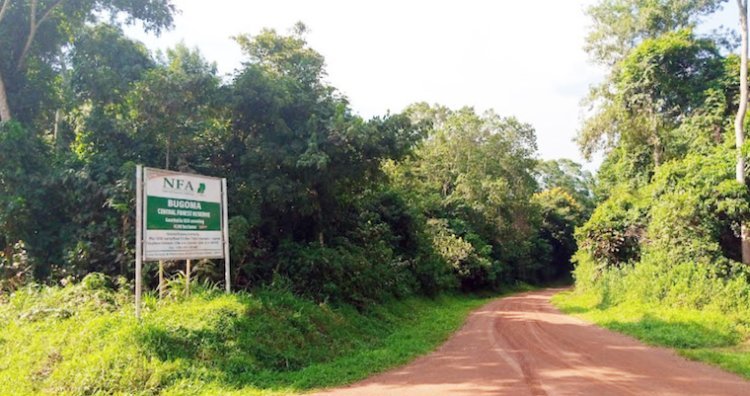CSOs withdraw Bugoma forest appeal case over litigation delays

Story by; URN
Civil Society Organizations (CSOs) under the Save Bugoma Forest Campaign coalition have withdrawn their appeal case aimed at halting the destruction of Bugoma Central Forest Reserve.
The decision comes amid growing frustration over prolonged judicial delays that have allowed Hoima Sugar Limited (HSL) to continue its operations, leading to further degradation of the forest. The coalition, which includes the Africa Institute for Energy Governance (AFIEGO), National Association of Professional Environmentalists (NAPE), and the Water and Environment Media Network (WEMNET), announced the withdrawal in a statement, citing delayed litigation by the Court of Appeal.
“While the case was filed with hopes that it would support efforts to stop the destruction of Bugoma Forest, its prolonged stay in the judicial system is affecting our other advocacy efforts, necessitating its withdrawal," reads the statement. The appeal was filed in May 2021, following a High Court decision that upheld the Environmental and Social Impact Assessment (ESIA) certificate issued by the National Environment Management Authority (NEMA) to HSL.
This certificate permitted the company to carry out sugarcane cultivation, urban development, and other activities within Bugoma Forest, a move that the CSOs argued violated multiple environmental laws. The CSOs' case highlighted several breaches, including NEMA’s failure to consult all potentially affected communities and to invite public commentary on the environmental impact statement, as required by Uganda’s Environmental Impact Assessment regulations. Despite these arguments, the High Court ruled against the petition, allowing Hoima Sugar to continue its operations.
Since the High Court's ruling, the CSOs have been advocating for an expedited hearing in the Court of Appeal. However, these efforts have been met with delays, which they allege have enabled Hoima Sugar to continue violating the terms of its ESIA certificate. This includes the destruction of reserved natural forest areas, as noted in a 2022 restoration order issued by NEMA.
Dickens Kamugisha, chairperson of the Save Bugoma Forest Campaign, described the withdrawal of the appeal as a difficult but necessary decision. “Withdrawing our appeal from the Court of Appeal has been painful and difficult, but it is necessary. The courts in Uganda have demonstrated that they are unwilling to support forest conservation efforts due to the failure to hear and conclude cases. Having withdrawn the case, we will redirect our resources to other much-needed efforts to stop the ongoing destruction of Bugoma Forest," said Kamugisha.
WEMNET’s Joshua Mutale reechoed these sentiments, criticizing the judiciary for its failure to promptly address cases that have far-reaching implications for Uganda’s critical ecosystems. “It is unfortunate that our judicial system remains insensitive and weak which has resulted in worsening destruction of critical ecosystems such as forests, national parks, wetlands, lakes, rivers, and others. This also explains the increasing cases of land grabbing, abuse of community rights, and others,” he said.
The group says that despite the withdrawal of the appeal, it has not abandoned its efforts to stop the destruction and save the Bugoma Forest. The coalition plans to intensify grassroots mobilization, urging local communities to pressure the government, NEMA, and other agencies to enforce environmental regulations and ensure compliance with restoration orders issued to Hoima Sugar.
One of the key priorities moving forward is the release of the boundary opening report for Bugoma Forest by the Ministry of Lands. This report is crucial for determining the precise boundaries of the forest and ensuring that every inch is protected from encroachment. Located in Uganda's Kikube district, Bugoma Central Forest Reserve is a biodiversity hotspot, home to a variety of species, including chimpanzees, monkeys, reptiles, birds, and butterflies.
The forest also hosts several tree species that are endemic to the region. However, its proximity to oil exploration sites has exacerbated habitat disturbances, leading to the displacement of many grassland species































